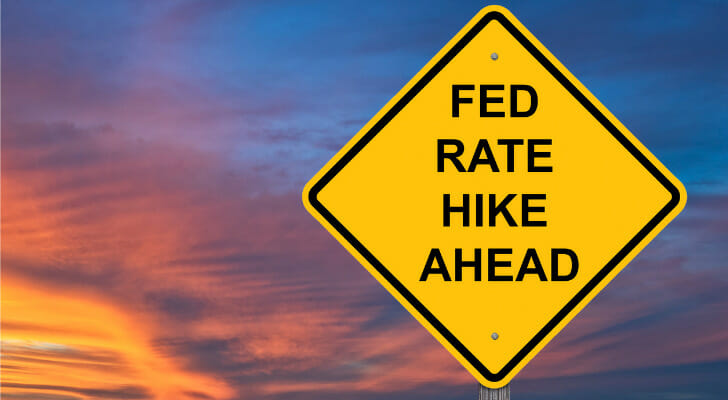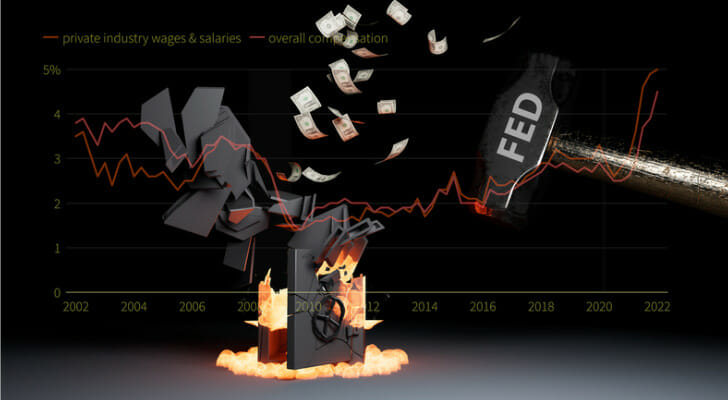On Wednesday, May 3, the Federal Reserve raised interest rates for the tenth time since March, 2022, this time hiking rates by 0.25% or “25 basis points.” This brings the benchmark federal funds rate to between 5% and 5.25%, the highest level since mid-2007.
The announcement follows on the heels of a series of financial crises. In recent weeks three major banks have collapsed, in each case due to substantial losses linked to rapidly increasing interest rates. At the same time, U.S. inflation has fallen from a June 2022 high of 9.1% to its current rate around 5%. Combined, this had many observers wondering whether the central bank would pause its decision on the next series of rate increases.
That did not happen, and the board released a statement in which it remained cryptic and ambiguous about future interest rate increases. While many observers have taken this as a signal that the central bank will pause rate hikes in the future, the language of this statement closely tracks the statement it issued in March after its previous interest rate increase.
For now, however, interest rates have gone up again. What is the takeaway for individual households? There are a few areas to watch.
For hands-on guidance navigating this particular economic environment, consider matching for free with a vetted financial advisor.
Consumer Borrowing
When it comes to borrowing money, higher interest rates make most loans more expensive.
The Federal Reserve’s interest rate is otherwise known as the Federal Funds Rate. It is the target interest rate banks charge to lend each other money on a short-term basis. It defines almost all other structured lending, because, ultimately, it’s the cost of cash for a financial institution. The upshot is that this is the rate at which most lending starts.
The Federal Reserve’s campaign to raise interest rates has made borrowing money significantly more expensive over the past year, and this rate hike will add to that cycle.
This will affect short-term and unsecured credit most significantly. Credit cards in particular will get more expensive, as they are highly responsive to federal reserve rate hikes, so if you’re carrying a balance it might be a good idea to get that paid off. The same is true for other unsecured lending such as personal loans from the bank.
Secured loans such as mortgages and auto loans will get more expensive as well, but somewhat slower than more liquid products like a credit card. Still, mortgage rates in particular have increased significantly over the past year, approximately tripling between March, 2022 and April, 2023. This will make it more expensive to buy a new home and less lucrative to sell one, as buyers have to dedicate more money to financing and have less to spend on their offer.
The overall effect this will have on the housing market is unclear. Higher interest rates reduce buyers’ spending power, potentially lowering prices and overall demand. Yet there is some evidence that lower offers reduce sellers’ incentives, potentially keeping houses off the market and bottlenecking supply.
Student Borrowers
Student borrowers should expect to lose a lot of money to higher interest rates overall, although May’s rate hike may not contribute significantly.
The Federal Reserve’s interest rate heavily contributes to the price of U.S. Treasury bonds, which in turn determine the interest rate on student loans. When the central bank raises its rates, this can significantly increase the cost of getting an education.
This affects two categories of borrowers. First, graduates who hold existing loans with a variable interest rate may see that rate go up. Second, students who take out loans for future school years will see their interest rates increase. Graduates who hold existing loans with a fixed interest rate will be unaffected.
All of that said, the May, 2023 rate hike will not contribute to current debt woes. The Department of Education prices its interest rates on an annual basis and has already determined the rates for July 1, 2023. The next opportunity for student loans to get more expensive will be July 1, 2024. While May’s rate increase may influence those future rates, a lot can happen between now and then.
Banking
Some good news for households is that when finance gets more expensive, the interest rates on banking products go up as well.
Products like savings accounts, money market accounts and certificates of deposit (CDs) will most likely pay slightly higher interest rates after the Federal Reserve’s decision. The effect will not be immediate, as most banks take at least one or two months to adjust their products, but it will be a net increase for individuals looking to get more money from their bank.
In particular, investors who want to get a certificate of deposit may want to move quickly. There is significant uncertainty around the price of bank assets in the near future. Instability in this sector may cause banks to pay more interest going forward, raising rates in order to bring in more deposits to shore up their cash flow. On the other hand, fears about instability and recession may cause the Federal Reserve to pause or even reverse its rate hikes, which would lower the rates on banking products overall.
There’s no good way to make predictions in this sector. Still, for long term investors thinking about a banking product, there’s a decent chance that right now is as good as it will get.
Investors
Other long term investors may profit as well.
Higher interest rates are a double-edged sword for investors. For bondholders, this will likely mean higher yields from new products. When interest rates go up from the Federal Reserve, this pushes up the interest on almost all debt-based products, including corporate and Treasury bonds. Old bonds lose some of their value, so right now may not be the right time to sell, but new bonds offer higher coupon payments, so it may be a very good time to buy.
Stockholders, on the other hand, have already seen the S&P 500 fall in response to the Federal Reserve’s Wednesday announcement. Higher interest rates are designed to make cash more expensive, slowing down growth and spending for businesses. This tends to drag down the value of stocks. The odds are that this will hurt equity investors, making now a good time to hold on to what you have, or perhaps even buy more assets at a discount while you can.
Retirees

The good news for retirees is that, by making bank products more valuable, higher interest rates make cash more valuable in general. This helps to push back on the erosion power of inflation, which can significantly degrade the value of a retirement portfolio in the long run.
But, as noted above, rate hikes tend to be bad for investors who need to get value out of their existing portfolio. Higher interest rates tend to push down the value of stocks and existing bonds. All of this can be fine for an investor with the flexibility to hold their position, and can actually be a good thing for someone with the liquidity to buy in during the slump.
For retirees, however, this can create a problem called “sequence risk.” This term refers to having to sell your assets while the market is down. There aren’t many good ways to beat sequence risk, but the more you can rely on cash, Social Security and income-based investments without having to sell assets in the wake of a rate hike, the better off you’ll be.
Workers
Finally, for workers across the board, now may be a good time to shore up your emergency savings.
Here it’s important to say what we’re not saying. We’re not saying that the economy is going to tank in 2023, and we’re not saying that you need to hoard two years’ worth of cash (as some finance gurus have warned). There’s no need to panic, especially since panic over a recession can often turn into a self-fulfilling prophecy.
That said, Federal Reserve interest rate hikes often contribute to a recession. This is in very large part by design. The theory behind curbing inflation is that the central bank wants to pull demand out of the economy by making the job market somewhat weaker and individual consumers slightly poorer. If they go far enough, they can take out the excess cash that contributes to higher prices. If they go too far, they can take out the cash that businesses and households depend on and trigger a recession.
Right now a lot of economists and market analysts are putting their chips on a recession in 2023, and May’s rate hike makes that iteratively more likely. To the extent that there is one, the plurality consensus appears to be that a recession will occur in late 2023 and, due to good market fundamentals, will be relatively short lived. This risk is compounded by the scheduled resumption of student loan payments this summer, which have been strongly linked to reduced consumer spending and retirement savings.
All of that is just forecasting though. A recession could be worse than predicted or it could fail to materialize entirely. For workers and individual households, then, the takeaway is this: Shore up your emergency savings. Double check your household budget. And, if possible, brush up on your professional network so you aren’t making cold calls just in case.
Then, live your life knowing that you are on sound financial footing no matter what the Federal Reserve does next.
Bottom Line
The Federal Reserve has raised interest rates for the tenth time in 14 months. This will likely make borrowing more expensive, banking products more lucrative and a recession slightly more likely.
Savings Tips
- Don’t worry; prepare. While the threat of recession is not an emergency, it’s certainly well worth getting ahead of in your own financial life. So build your emergency fund, then relax knowing that you are prepared for the ups and the downs.
- A financial advisor can offer valuable insights into a broad range of matters, including comprehensive financial planning services, savings strategies, retirement planning, estate planning and investing. Finding a financial advisor doesn’t have to be hard. SmartAsset’s free tool matches you with up to three vetted financial advisors who serve your area, and you can interview your advisor matches at no cost to decide which one is right for you. If you’re ready to find an advisor who can help you achieve your financial goals, get started now.
Photo credit: ©iStock.com/iambuff, ©iStock.com/JimVallee
